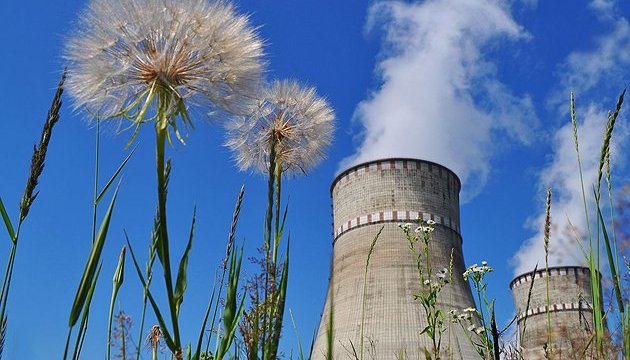УДК 550.42 • Issue 3 (31) / 2020 • 112-122 pages
Fomin Yu.O., Demikhov Yu.M., Verkhovtsev V.G., Borisova N.M., Chuprinova S.F.
Fomin Yu.O., PhD (Geol-min), leading researcher, State Institution «The Institute of Environmental Geochemistry of National Academy of Sciences of Ukraine», https://orcid,org/0000-0002-3043-8359, yaf1941@gmail,com
Demikhov Yu.M., PhD (Geol-min), senior research fellow, head of the laboratory, SI State Institution «The Institute of Environmental Geochemistry of National Academy of Sciences of Ukraine», https://orcid,org/0000-0002-3576-6570, y_demikhov@ukr,net
Verkhovtsev V.G., D. (Geol.S), senior research fellow, head of department, SI State Institution «The Institute of Environmental Geochemistry of National Academy of Sciences of Ukraine», https://orcid,org/0000-0002-1015-6725, Verkhovtsev@ukr,net
Borisova N.M., Lead Engineer, State Institution «The Institute of Environmental Geochemistry of National Academy of Sciences of Ukraine»», https://orcid,org/0000-0002-7169-1430, IGNS_Borysova@nas,gov,ua
Chuprinova S.F., Lead Engineer, SI State Institution «The Institute of Environmental Geochemistry of National Academy of Sciences of Ukraine», https://orcid,org/0000-0002-1466-9333, IGNS_Chuprynova@nas,gov,ua
Abstract
The article presents the results of study of the isotopic composition of oxygen and carbon of carbonates in ore deposits of the Early Precambrian of the Ukrainian Shield. The following objects were studied: 1. Iron ore formations of the Kryvyi Rih ultra-deep well, where carbonates were extracted from all units of the Kryvyi Rih Paleoproterozoic series, as well as from the Archean rocks of the Dnipropetrovsk complex. 2. Uranium ores and host rocks of the Severynivsky deposit of the uranium-albite formation of the Paleoproterozoic age. 3. Gold deposits of Archean greenstone structures of the Dnieper, including: Sergiivske (Au-pyrite and Au-Bi-Te ores) and Balka Shyroka (Au-glandular and Au-Ag-Pb-Zn ores). Genetically, the carbonates of the compared areas show signs of primary sedimentary carbonate formations that have experienced the influence of hydrothermal-metasomatic processes. The temperature conditions of their formation indicate a change in the mode of carbonate formation from progressive in the temperature range of 70-150°C (diaphthoresis) – 220-300°C (metasomatosis) to regressive: up to 180-80°C (late veins). Compared to Archean carbonates, Proterozoic carbonates are inherently heavier oxygen and light carbon. The scarnoid mechanism of the formation of the ore halo in a highly magnesian environment explains the sequence and metasomatic nature of carbonation. The environment and conditions of mineral formation are favourable for the growth of large metacrystals of dolomite, calcite, actinolite and tremolite; as confirmed by the study of fluid inclusions. The presence of ore minerals in inclusions in calcite confirms the ore-forming nature of the studied fluid. Among the granitoids of the Dnipropetrovsk complex, sites similar to the graphite-carbonate rocks of the Gdantsev Formation are noted, including the isotopic composition, which are characterized by intense tectonic disturbances. In such zones of decompression, a significant drop in temperature is observed. All this suggests that there is a system of large faults (tectonic wedges) in this region of Kryvbass, with the immersion of fragments composed of rocks of the Kryvyi Rih series into more ancient granitoids.
Key words: Archean, Paleoproterozoic, deposits of uranium and gold, carbonates, isotopic composition, Ukrainian shield, Archean greenstone structures.
Article
Reference
- Shcherbakov I.B. (1975), Naukova Dumka. Kiev. P. 150.
- Kurlov N.S., Belevtsev R.Ya., Mechnikov Yu.P. (2002). Zbirnik naukovih prac IGNS NAN Ukrayini. Vip. 5/6. pp. 133-144.
- Kurlov N.S., Belevcev R.Ya.,1997.Mineralogicheskij zhurnal. Kyiv, 19. № 5. pp. 85-100.
- Fomin Yu.A., Demihov Yu.N., Verhovtsev V.G., Borisova N.N. (2019). zhurnal. № 3 pp. 34-43.
- Galimov E.M. (1968). Geohimiya stabilnyih izotopov ugleroda. Moskva: Nedra. P. 226.
- Fomin Yu.A., Demihov Yu.N. (2007). NAN Ukraini. № 1. pp. 136-142.
- Fomin Yu.A., Demihov Yu.N., Lazarenko E.E., Tereschenko S.I. (2002). . GeohImIya ta ekologIya. Zbirnik naukovih prac IGNS NAN Ukrayini. Kyiv, Vip. 5/6. pp. 124-132.
- Shields, G.A. and Veizer, J. (2002). Geochemistry, Geophysics, Geosystems (an electronic journal of the earth sciences)., Vol.3, № 6, pp. 1-12, (10.1029/2001GC000266).
- Lisichenka G.V., Verhovtseva V.G. (2014). Kyiv: Naukova dumka, P. 355.
